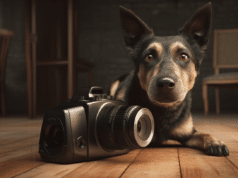
 Note: Commissions may be earned from the links below.
Note: Commissions may be earned from the links below.
Understanding Separation Anxiety in Dogs
Separation anxiety in dogs is common. Signs of distress like barking, whining, destructive behavior and trembling can be seen. It’s caused by fear and attachment to their owners. With the owner gone, the pup’s distress grows.
To manage it, several strategies can be used:
- Gradually get your pup used to being alone in a safe spot, like a crate or designated space.
- Develop a consistent routine before leaving, so the pup associates this with the owner’s return.
- Give your pup plenty of exercise and playtime before you leave.
In milder cases, medication is usually not needed. But, if symptoms are bad, consult with a vet about this option. In rare cases, where behavior modification doesn’t help, creating a schedule for the pup during hours of absence can help. By tailoring mechanisms to each pup’s lifestyle, long-term solutions can ease the pup’s anxiety. If your pup’s separation anxiety is worse than yours, behavioral interventions are needed.
Behavioral Interventions
To help your furry friend relax and overcome separation anxiety, you can turn to behavioural interventions. Dive into the world of enrichment activities, crate training, desensitization and counterconditioning, and medications as possible solutions to manage separation anxiety in dogs.
Enrichment Activities
Enrichment Programs can help improve an individual’s overall well-being. Activities like exercises, learning new skills, mental stimulation games, cultural experiences, outdoor activities, vocational programs, and community involvement can all be tailored to suit individual needs.
These programs can potentially boost self-esteem, independence, and emotional expression. Program coordinators consider a person’s interests, hobbies, capabilities, and social circle before designing interventions.
For instance, a group home for people with intellectual disabilities initiated an Enrichment Program in 2018. This included field trips to amusement parks, museums, and art galleries. During this program, participants were observed becoming more emotionally expressive when socializing.
Crate Training
Crate Training is a popular technique for training dogs. This means they stay in their crates without feeling locked up or cramped.
Six steps to follow:
- Choose the right size for your pup’s breed.
- Introduce the crate with treats & comfort items.
- Encourage them to enter & eat inside it.
- Gradually increase time & reward good behavior.
- Ignore whining or barking & let them out when calm.
- Provide treats & toys to maintain a positive association.
Don’t punish or force them. Instead, make the space feel like home.
Not all dogs respond well to this, especially those from abusive situations. Seek professional help from experienced trainers.
In the 1940s, breeders started using crates as an aid for potty training puppies. Now, Crate Training is a tool for owners who want their furry friends to be healthy & obedient. Pavlov was onto something with his dogs – it’s as satisfying to hear a bell ring as it is to eat a cheeseburger!
Check out our detailed article for more information: Everything You Need To Know About Dog Crates And Crate Training.
Environmental Changes
To manage separation anxiety in your furry friend as a solution, this section focuses on ADAPTIL or anxiety vests, and hiring a dog sitter or walker. These changes aim to create a calm and comfortable environment for your pup and help them feel less anxious when you’re away.
Adaptil or Anxiety Vests
For pets feeling anxious due to changes in their environment, ADAPTIL or anxiety vests are great options. Here’s what you need to know:
- ADAPTIL is a synthetic pheromone that female dogs release when they give birth. It helps to calm down puppies and adult dogs.
- Anxiety vests provide constant pressure on your pet’s chest, creating a soothing effect similar to swaddling a baby.
- Adaptil can come in diffusers, sprays, or collars – depending on the needs of the pet.
- Anxiety vests are made for different animals and come in various sizes. Make sure it fits your pet properly for comfort.
- Using ADAPTIL or anxiety vests should be done alongside training and behavior modification techniques.
Exercise, routine feeding times, and mental stimulation are also helpful for reducing stress. Socializing your puppy can stop anxiety from developing. Speak with your vet to find other solutions tailored to your pet’s needs. To help the planet, consider hiring a dog sitter or walker instead of letting your pet roam the streets.
Hiring a dog sitter or walker
Dog Care Via Professional Sitters and Walkers
Own a pup but are too busy to look after it? Hire a pro sitter/walker! They’ll:
- Meet your pet’s needs while you’re away.
- Provide exercise & mental stimulation for your furry friend.
- Keep your dog’s routine intact.
- Offer full-time or part-time services.
- Give you peace of mind.
Check online forums for recommendations. Verify credentials, licenses & feedback before hiring. Establish a trusting relationship for both parties.
Who needs treats & belly rubs? Positive reinforcement training can save the planet!
Positive Reinforcement Training
To help your pup stay calm and overcome separation anxiety, positive reinforcement training with obedience training, impulse control training, and relaxation training can be a solution. Each has its benefits in building your dog’s confidence, impulse control, and relaxation skills.
Obedience Training
To effectively communicate with your pet, you must do obedience reinforcement training. This teaches them to respect and follow commands. Plus, reward good behavior. A deep understanding of the animal’s behavior is needed to create a tailored training plan. Positive training methods help train the animal quicker, with less stress.
Various tools like treats, praise, and toys can be used during training. Start by teaching basic commands. Repeat exercises regularly for the best results. Clicker training can help owners reward pets at the right moment.
Each animal has its own personality and learning style. Training should be done in a calm environment with no distractions. The trainer should be patient, encouraging, and consistent.
Socialization is also key. Dog parks and walking areas let the pet interact with others while respecting the owner’s authority.
Impulse Control Training
Training to Control Impulses – Teaching restraint and patience with positive reinforcement. This helps individuals or animals better manage their impulses. Through training, impulse control can be improved.
Impulse Control Training can benefit those prone to destructive or harmful behavior. Dogs reacting to other animals can be taught to remain calm and still. People with addiction issues may benefit from learning how to resist temptations.
Consistent training with positive reinforcement is important. Punishment-based approaches may lead to more impulsivity.
A study by Emory University found that dogs trained with positive reinforcement had fewer problem behaviors than those trained with punitive methods. This shows the value of encouragement over punishment when trying to change behavior.
Conclusion: Creating a Calm and Happy Environment for Your Dog
Creating an environment that brings peace and joy to your pup is essential for their well-being.
Regular exercise, a safe area, and positive reinforcement can alter your pet’s behavior.
Understanding the root of their separation anxiety and investing in the right training can help establish a tranquil atmosphere for your canine friend.
Sticking to these strategies is key. Make sure to provide plenty of physical activity, playtime, and socialization. Treat-dispensing puzzles, as toys, can help reduce boredom and destructive actions.
For dogs with serious anxiety issues, it’s best to seek professional advice. Qualified veterinarians, after diagnosis, may prescribe medications.
Pro Tip: Patience and consistency are essential for managing separation anxiety. Make sure to create a routine that allows your pet to have positive experiences while you’re away.
Frequently Asked Questions
1. What is separation anxiety in dogs?
Separation anxiety is a behavior problem in dogs that occurs when they become distressed and anxious when left alone or separated from their owners.
2. What are some signs of separation anxiety in dogs?
Some signs of separation anxiety in dogs can include excessive barking, whining, pacing, destructive behavior, and inappropriate elimination.
3. How can I manage my dog’s separation anxiety?
You can manage your dog’s separation anxiety by gradually desensitizing them to your absence, providing them with interactive toys and puzzles, practicing positive reinforcement training techniques, and seeking the help of a professional trainer or behaviorist if necessary.
4. Is medication necessary to manage separation anxiety in dogs?
Medication may be necessary in severe cases of separation anxiety, but it is not always required. It is important to consult with your veterinarian and/or a professional behaviorist before deciding on medication as a treatment option.
5. Can separation anxiety in dogs be cured?
While separation anxiety in dogs can be managed and improved, it may not be completely cured. However, with consistent training and management techniques, you can help your dog feel more comfortable and calm when left alone.
6. How long does it take to see improvement in my dog’s separation anxiety?
The length of time it takes to see improvement in your dog’s separation anxiety can vary depending on the severity of the behavior and the consistency of the training. It is important to be patient and persistent in your efforts to help your dog feel more comfortable when left alone.



